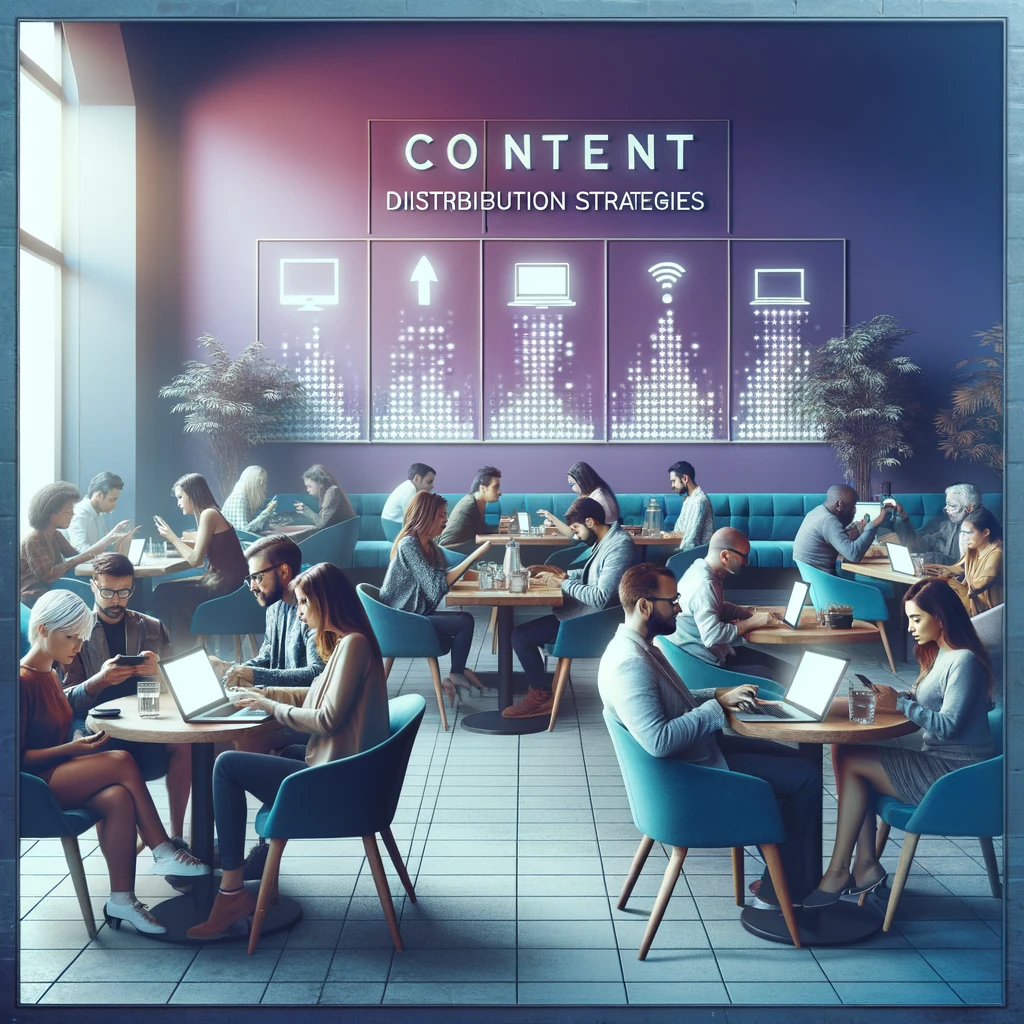
Channelize Your Success: Content Distribution Channels for Drug Rehab Centers
Table of Contents
content distribution drug rehab
Introduction: Channelize Your Success: Content Distribution Channels for Drug Rehab Centers
In today's digital landscape, effective content distribution is essential for drug rehab centers aiming to enhance their visibility and connect meaningfully with their audiences. By strategically spreading educational and compelling content, these centers can significantly improve both reach and engagement, critical factors in driving admissions and supporting patients and their families.
- Targeted Approach to Content Distribution
- For drug rehab centers, the primary goal is to inform and assist individuals in need and their loved ones. Implementing targeted content distribution strategies ensures that the right message reaches the right audience at the right time. By using detailed audience insights, rehab centers can tailor their messages to address specific struggles, recovery stories, and educational content that resonates with their audience.
- Choosing the Right Channels
- Not all content distribution channels yield the same results, especially in a specialized field like drug rehabilitation. Key platforms to consider include:
- Social Media: Platforms like Facebook and LinkedIn offer opportunities for creating supportive communities and facilitating open discussions.
- Email Marketing: Through personalized email campaigns, centers can provide ongoing support and information to those considering or currently undergoing treatment.
- Blogs and SEO: Regularly updated blogs help in maintaining a steady stream of engagement and can be optimized for search engines to attract organic traffic.
- Video Content: Platforms like YouTube serve as excellent mediums for storytelling and sharing success stories that can inspire and educate viewers.
- Not all content distribution channels yield the same results, especially in a specialized field like drug rehabilitation. Key platforms to consider include:
- Benefits of Effective Distribution
- By effectively distributing content across the right channels, drug rehab centers can achieve:
- Enhanced engagement by providing valuable resources that meet the audience's needs.
- Increased visibility in search engines through well-optimized content, leading to higher web traffic.
- Stronger relationships with patients and families, built through consistent and reliable information sharing.
- By effectively distributing content across the right channels, drug rehab centers can achieve:
In conclusion, for drug rehab centers, the choice of content distribution channels plays a pivotal role in the success of their marketing efforts. By focusing on channels that best meet the needs of their audience, these centers can ensure that their content not only reaches but also positively impacts those in need.
Defining the Target Audience for Drug Rehab Content
Understanding the primary audience for drug rehab content is essential to crafting effective marketing strategies. Drug rehab centers need to tailor their content to meet the specific needs and preferences of both potential patients and their families. This chapter delves into the characteristics of these groups and provides insights into their unique requirements.
- Characteristics of Potential Patients
- Age and Demographics: The age range can vary widely, necessitating content that is accessible to both younger and older adults.
- Behavioral Patterns: Many are in the process of seeking help or are contemplating it. Content should be motivating and supportive, encouraging them to take the next step.
- Emotional State: Understandably, potential patients may be experiencing feelings of fear, confusion, or hopelessness. Content needs to be compassionate and reassuring, providing a sense of hope and direction.
- Understanding Family Needs and Preferences
- Information Seekers: Families are often the primary researchers. They look for detailed, reliable information about treatment options, success rates, and what to expect during the rehab process.
- Support Networks: Content should also address how families can support their loved ones during recovery, including practical advice and emotional guidance.
- Decision Influencers: Families frequently influence the decision-making process regarding treatment options. Hence, content should also persuade them of your center’s efficacy and compassionate approach.
- Preferences in Content Consumption
- Preferred Channels: Different age groups may prefer different channels; younger audiences might be more engaged via social media, while older demographics might favor emails or blogs.
- Content Type: Video content may be particularly effective for storytelling, such as patient success stories, whereas articles might be better for providing detailed guides and explanations.
- Cultural and Socioeconomic Considerations
- Understanding cultural backgrounds can help tailor content that resonates more deeply with potential patients and their families.
- Socioeconomic factors may influence the type of information sought, such as insurance concerns and affordability of treatment options.
By aligning content strategies with the needs and preferences of these key audience segments, drug rehab centers can enhance their marketing effectiveness. Content should not only inform but also provide real value, helping individuals and families feel understood and supported through their journey.

Overview of Content Types for Drug Rehab Centers
Effective content marketing in the drug rehab sector relies on a strategic mix of content types that resonate with potential patients and their families. Each type of content serves a unique purpose and plays a crucial role in educating, engaging, and motivating the target audience. This chapter explores the various content types and outlines best practices for creating impactful content in the drug rehab sector.
- Articles
- Purpose: Provide in-depth information, answer common questions, and address concerns about drug rehabilitation processes.
- Best Practices: Articles should be well-researched, easy to understand, and SEO-optimized to ensure they are discoverable via search engines. Use subheadings, bullet points, and short paragraphs to enhance readability.
- Videos
- Purpose: Offer a more personal touch, showcasing real stories and testimonials or explaining treatment processes through visual aids.
- Best Practices: Keep videos short and engaging. Include subtitles for accessibility and optimize video titles and descriptions with keywords to improve visibility on platforms like YouTube.
- Testimonials
- Purpose: Build trust and credibility by sharing experiences of past patients who have successfully gone through the rehabilitation process.
- Best Practices: Testimonials should be authentic and relatable. Video testimonials can be particularly powerful, but written stories should also be included on your website and in brochures.
- Informational Guides
- Purpose: Equip potential patients and their families with step-by-step guides on getting started with rehab, what to expect, and post-rehab care.
- Best Practices: Guides should be comprehensive yet simple to follow. Use clear headings, and consider downloadable PDF formats that people can refer to offline.
Each content type must be tailored to meet the needs of your audience while supporting your facility’s objectives of driving engagement and admissions. It is also important to regularly update content to reflect any changes in treatment practices or regulations.

Effective Distribution Channels for Drug Rehab Centers
In the realm of drug rehab content marketing, selecting the right distribution channels is pivotal for reaching and engaging the intended audience. Here we explore various effective channels, tailored strategies for each, and how they can significantly impact your marketing efforts.
- Social Media
- Platforms: Focus primarily on Facebook and Instagram, which offer extensive reach and robust advertising tools.
- Strategies: Tailor content to be engaging and supportive, utilizing visual storytelling through photos and videos to connect emotionally. Use targeted ads to reach specific demographics such as age groups, geographic locations, or interests related to recovery and wellness.
- Email Newsletters
- Segmentation: Break your email list into segments based on user behavior, such as those who are seeking information, currently in treatment, or alumni of your program. This allows for more personalized communication.
- Personalization: Send tailored content that resonates with where each segment is in their recovery journey. For example, informational content for seekers, support resources for current patients, and community-building news for alumni.
- Blogs and Articles
- SEO: Optimize your articles and blog posts with relevant keywords like "drug rehab centers," "addiction treatment promotion," and "effective marketing for addiction treatment centers" to improve search engine rankings and attract organic traffic.
- Content Focus: Provide detailed guides, recovery stories, and expert insights that help in establishing your authority and aiding those looking for support in their or a loved one’s recovery process.
- Podcasts and Webinars
- Engagement: These platforms are ideal for deep dives into topics relevant to patients and families. They provide an interactive way to engage with content through Q&A sessions and can help in humanizing your brand.
- Storytelling: Share success stories, bring in experts, or discuss new treatment options. These formats are highly engaging and can help build trust and authority in your field.
Each of these channels has its unique strengths and can be leveraged to create a comprehensive and effective content distribution strategy that not only informs but also inspires action.

Measuring Success and Engagement in Drug Rehab Content Marketing
To ensure that the content marketing efforts of drug rehab centers are effective, it is crucial to measure success and engagement accurately. This chapter discusses the key performance indicators (KPIs) that should be monitored, along with the tools and techniques that can be employed to track engagement and return on investment (ROI).
- Key Performance Indicators (KPIs)
- Website Traffic: Monitor the number of visitors to your site to gauge interest levels in your content.
- Engagement Rate: Measure likes, shares, comments, and time spent on pages to understand how engaging your content is.
- Conversion Rates: Track how many visitors take a desired action, such as signing up for a newsletter or downloading a guide, which indicates the effectiveness of your content in driving action.
- Bounce Rate: A high bounce rate might indicate that the content is not relevant to the visitors or that the landing page is not effectively designed.
- Tools and Techniques for Tracking Engagement and ROI
- Analytics Tools: Use Google Analytics or similar platforms to track website activity and engagement metrics. These tools can provide insights into user behavior, traffic sources, and content performance.
- Social Media Monitoring: Tools like Hootsuite or Buffer can help track performance metrics across various social media platforms. This is crucial for understanding how content performs in different channels.
- A/B Testing: Regularly testing different versions of your content can help determine what resonates best with your audience. Use tools like Optimizely for web content and Mailchimp for email campaigns.
- ROI Calculation: Measure the return on investment by comparing the cost of content production and distribution against the revenue generated from new admissions and other conversions attributed to these efforts.
By systematically tracking these KPIs using the appropriate tools, drug rehab centers can gain valuable insights into what content types and distribution strategies are most effective. This data-driven approach allows for continual optimization of content strategies to better meet the needs of the target audience and improve overall marketing performance.

Ethical Considerations in Content Marketing for Drug Rehab Centers
Navigating the complex landscape of healthcare marketing requires a firm understanding of both legal regulations and ethical considerations, especially for drug rehab centers. This chapter focuses on how to ethically promote content while complying with healthcare marketing standards, ensuring that all communications are both respectful and informative.
- Compliance with Healthcare Marketing Regulations
- HIPAA Compliance: Ensure that all marketing materials comply with the Health Insurance Portability and Accountability Act (HIPAA), protecting patient privacy and confidentiality at all times.
- Truth in Advertising: All promotional materials must be truthful, not misleading, and substantiated, according to guidelines set by the Federal Trade Commission (FTC).
- State Regulations: Be aware of and comply with specific state laws that may affect marketing practices in different regions, which can vary widely in terms of what is required and what is prohibited.
- Promoting Content Ethically and Sensitively
- Respectful Messaging: Content should always respect the dignity and circumstances of those struggling with addiction. Avoid sensationalizing or stigmatizing language.
- Patient Consent: When using testimonials or stories, explicit consent must be obtained, and the privacy of the individuals must be a top priority.
- Cultural Sensitivity: Content should be inclusive and considerate of cultural differences in how addiction and recovery are perceived and treated.
- Education Over Promotion: Focus on providing valuable, educational content that aids understanding and decision-making rather than purely promotional content.
- Best Practices for Ethical Content Marketing
- Regular Training: Ensure that all marketing team members are trained in ethical practices and are up-to-date with compliance requirements.
- Auditing and Monitoring: Regularly audit marketing materials and campaigns to ensure ongoing compliance with all regulations and ethical standards.
- Transparency: Be transparent about the services provided and the results that can be realistically expected from your programs.
By adhering to these guidelines, drug rehab centers can create effective and ethical content marketing strategies that serve the needs of their audience responsibly and respectfully.
Conclusion: Maximizing Impact through Strategic Content Distribution
As we wrap up our exploration of effective content distribution for drug rehab centers, it's essential to recap the strategies that can elevate your reach and deepen your engagement with potential patients and their families. Implementing these strategies will not only inform your audience but also drive meaningful interactions that can lead to higher admissions and enhanced support.
- Strategic Use of Distribution Channels
- Leverage a mix of digital platforms to meet your audience where they are most active. Social media channels like Facebook and Instagram are key for visual storytelling and real-time engagement, while blogs and articles bolstered by SEO techniques ensure your visibility in search engine results.
- Personalization and Segmentation
- Tailor content to the needs of different audience segments to increase relevance and engagement. Use email marketing tools to segment your audience and deliver personalized messages that cater to the specific stages of their decision-making journey.
- Engagement through Multimedia
- Incorporate a variety of content types, such as videos, podcasts, and webinars, to provide comprehensive and engaging information that addresses the concerns and questions of those considering rehab services.
- Monitoring and Adapting
- Regularly track the performance of your content across all channels using analytics tools. This data should inform continuous improvements, helping you refine your approach and better serve your audience’s needs.
- Ethical Marketing Practices
- Always uphold the highest standards of ethical marketing. Ensure all content is compliant with healthcare regulations and respects the privacy and dignity of individuals seeking help.
Through these approaches, drug rehab centers can create powerful and effective content marketing strategies that are not only compliant but also compelling and deeply resonant with their target audience. The goal is to not just reach out but also positively impact those in need of guidance and support.
Questions You Might Ponder
What are the most effective content distribution channels for drug rehab centers?
Social media, email newsletters, blogs, and video platforms are highly effective for drug rehab centers. They allow for targeted and personalized content delivery, essential for engaging a sensitive audience with specific needs.
How can drug rehab centers use content to support patients and families?
Content should be educational, supportive, and reassuring, providing valuable information about treatment processes, recovery stories, and practical advice for family support, helping patients and families feel informed and less alone.
Why is it important to segment email marketing campaigns for rehab centers?
Segmentation allows centers to tailor their messages according to the specific stages of their audience's journey, such as those seeking information, undergoing treatment, or post-treatment support, making the content more relevant and effective.
What role does video content play in drug rehab marketing?
Video content offers a dynamic and engaging way to share patient success stories, explain treatment processes, and provide a personal touch that can be more compelling and memorable than text-based content.
How can drug rehab centers ensure their marketing practices are ethical?
Ensuring compliance with healthcare regulations like HIPAA, using respectful and non-stigmatizing language, obtaining patient consent for testimonials, and prioritizing education over promotion are crucial for ethical marketing.
Can we enhance our content strategy to better meet the needs of our audience? Let's align our efforts to ensure maximum impact and adherence to our ethical standards.